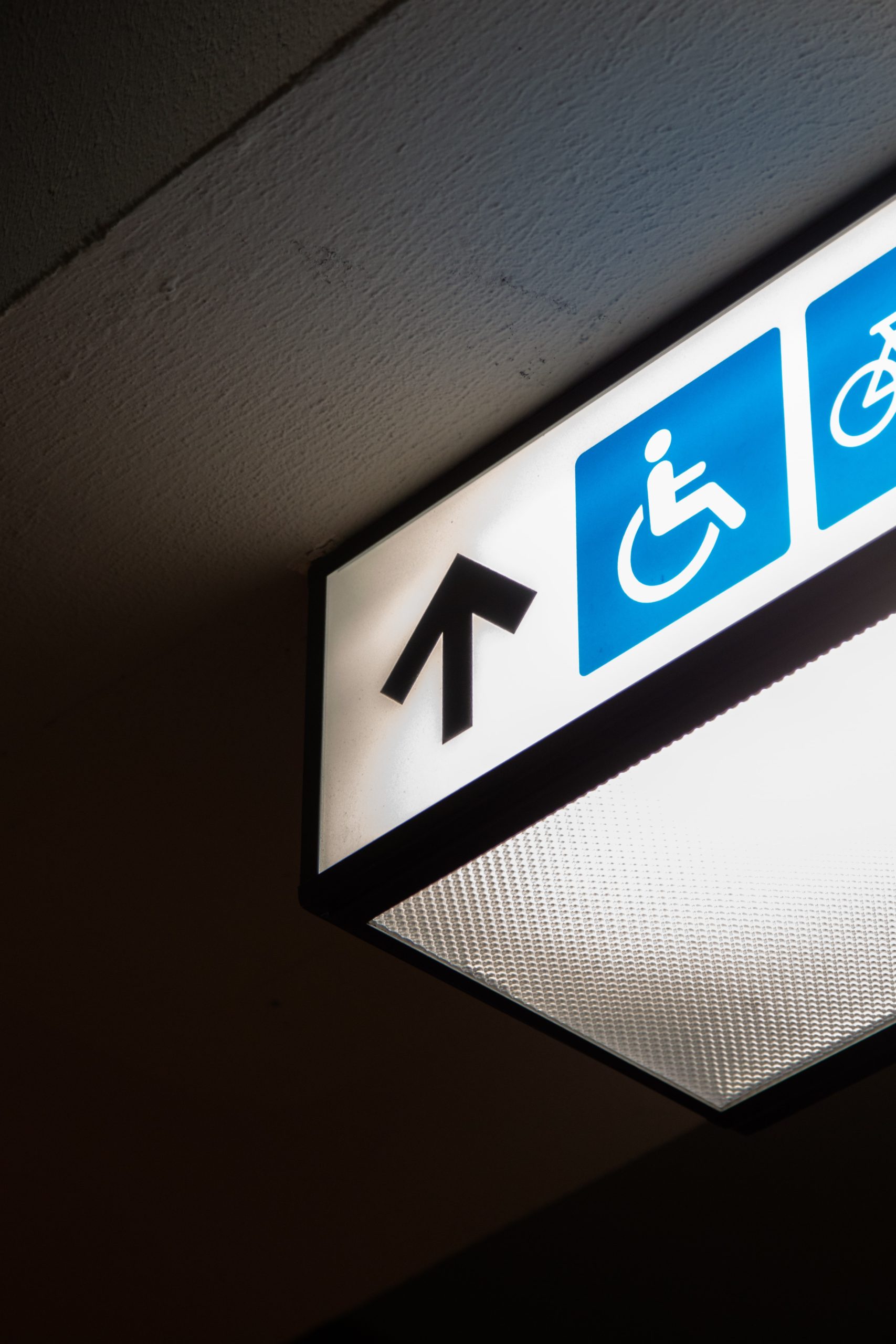
How to Qualify for Disability Benefits
For those of us navigating benefits programs and what our loved ones can qualify for, the entire process can seem confusing and stressful.
Understanding how to qualify for disability benefits is important, especially if the disabled person does not have sufficient income and requires financial assistance from the government. This article, detailing how qualifying for disability works in the U.S., can be your guide. We will look at Social Security Disability Insurance (SSDI) and Supplemental Security Income (SSI). After you learn about both programs, you will learn about medical conditions that make qualifying for disability nearly automatic, and conditions that will qualify you for disability insurance if properly proven. Finally, we will discuss the process of applying.
Social Security Disability Insurance (SSDI)
The first step to qualifying for disability benefits is to understand your options. The Social Security Disability Insurance (SSDI) program pays benefits to individuals and other family members if they are “insured”. Insured means that you have worked long enough and paid social security taxes.
The SSDI pays monthly benefits to those who are not able to work due to an illness or impairment. These illnesses and impairments are usually expected to last for longer than a year or end in the applicant’s passing within a year. Most people associate SSDI with the program that pays benefits to older Americans who have retired. The monthly payments are based on how much the person earned while working.
You may have already heard this – the social security test of disability is very strict. The law states that applicants must be “unable to engage in any substantial gainful activity by reason of any medically determinable physical or mental impairment which can be expected to result in death or which has lasted or is expected to last for a continuous period of at least 12 months.” These impairment or multiple impairments have to also be so severe that the applicant is not only unable to continue with their current work, but also cannot take on any other job that would lead to them earning a certain amount. For example, most applicants who show that they are able to work in a position that would pay more than $1,170 a month are not eligible for benefits, and $1,950 for applicants who are blind.
Operating under federal guidelines, state agencies make decisions about who meets the test of disability. Some of the things that they take into consideration include:
- Medical records
- Work history
- Applicant’s age
- Applicant’s education
After the applicants are approved, there is a 5-month waiting period before payments start.
You or your loved one may have multiple conditions, which is very common. Some of the major conditions that are cited by approved applicants include:
- Mental impairments
- Musculoskeletal conditions – arthritis, back injuries, and other skeletal/connective tissue disorders
- Conditions of the circulatory system
- Impairments of the nervous system
The remaining applicants claim benefits for injuries, infectious diseases, diabetes, respiratory conditions, and cancer. Many of them have life-threatening conditions.
Supplemental Security Income (SSI)
Similarly, to the Social Security Disability Insurance, the Supplemental Security Income program (or SSI) pays benefits to adults and children with disabilities who need financial assistance. The medical requirements for this program are also the same as those for SSDI: payments are made to individuals who have a medical condition that is predicted to last for at least one year or end in the person’s passing.
Essentially, SSI is a federal program that pays benefits to aged, disabled, and blind U.S. citizens with low income. The SSI is not funded by Social Security taxes, but is still administered by the Social Security Administration. The tests to pass for the SSI and SSDI are the same and only people who can show financial need are eligible. In 2017, the SSI paid individuals with no other income $735 a month. The payment was adjusted if the beneficiary’s income increased.
Some of the requirements that applicants must meet to benefit from the SSI program include:
- Being at least age 65 OR be blind or disabled.
- Being a citizen or a national of the U.S. or an alien who meets certain applicable requirements.
- Being a resident of one of the 50 U.S. states, District of Columbia, or the Northern Mariana Islands. Exceptions can be made for children whose military parents are assigned posts outside the U.S. Exceptions may also be made for students studying abroad.
- Having insufficient income.
Other factors that may be considered include:
- Marital status
- Monthly income
- Bank balance
Medical conditions that qualify for Social Security disability benefits
Now that you understand the purposes, similarities, and differences between the SSDI and the SSI, you might be wondering about the details of the qualification process for each.
In order to qualify for both programs, applicants have to demonstrate that they have one of the following conditions:
- Cardiovascular system
- Conditions of the heart: high blood pressure, blood clots, heart failure
- Digestive system
- Digestive disorders (Crohn’s Disease, Hepatitis)
- Endocrine system
- Thyroid disorders and obesity
- Genitourinary impairments
- Impairments related to reproductive organs and urinary systems (Renal Disease)
- Hematological disorders
- Blood disorders (chronic Anemia or Sickle Cell Disease)
- Immune system disorders
- HIV or Lupus
- Malignant neoplastic diseases
- Cancers
- Mental disorders
- Mental illnesses
- Multiple body system impairments (Ehlers-Danlos Syndrome and Fetal Alcohol Syndrome)
- Musculoskeletal system
- Muscular and skeletal system impairments
- Discs and degenerative disc diseases
- Neurological issues
- Nervous system disorders (Cerebral Palsy or Epilepsy)
- Respiratory diseases
- Impairments to the lungs and the exchange of oxygen or carbon dioxide (Asthma, lung infections)
- Skin disorders
- Other skin issues (Cellulitis, Hidradenitis Suppurativa)
- Special senses and speech issues
- Impairments of sight and hearing
How to automatically qualify for Social Security disability benefits
As we already mentioned, qualifying for social security disability benefits can be a challenge. The key to having a successful application is submitting the right documents. Having hard medical evidence that can prove your diagnosis as well as your inability to work is vital. As you learned already, the process of approval can be a long one. There are, however, several medical conditions that can get expedited approval. Through the Compassionate Allowance Initiative, applicants suffering from the following illnesses can automatically qualify for disability benefits:
- Acute leukemia
- Lou Gehrig’s disease (ALS)
- Stage IV breast cancer
- Inflammatory breast cancer
- Gallbladder cancer
- Early-onset Alzheimer’s disease
- Small cell lung cancer
- Hepatocellular carcinoma
- Pancreatic cancer
- Anaplastic thyroid carcinoma
How to apply
For both the SSDI and SSI, claimants can apply online. The Social Security Administration office asks applicants to file their claim as soon as they become disabled. In the case of SSDI, the benefits only become available after the sixth full month of disability, beginning with the first full month after the date that the disability began. In contrast, SSI benefits are paid for the first full month after the date the applicants file or the date they become eligible.
If claimants do not have access to the online application, they can apply by calling the toll-free number: 1-800-772-1213. You can also call this number to set up an in-person appointment to apply at a nearby Social Security office.
People who are deaf or hard of hearing can call the following number instead: 1-800-325-0778.
For some of you, this article may not be exhaustive, so there are other publications that you might find helpful. The Disability Starter Kit, for example, will help you get ready for your disability interview or online application. These kits will give you general information about the programs, how decisions are made after you have applied, and what documents or information the SSA office will request from you.
The basic checklist of required documents includes:
- Medical records already in your possession.
- Workers’ compensation information, including the settlement agreement, date of injury, claim number, and proof of other disability awarded payment amounts.
- Names and dates of birth of your minor children and your spouse.
- Dates of marriages and divorces.
- Checking or savings account number, including the bank’s 9-digit routing number, if you want Direct Deposit for your benefit checks.
- Name, address, and phone number of a person SSA can contact if they are unable to get in touch with you.
Conclusion
We hope that this article has been informative for those of you researching disability benefits. Yes, the process of qualifying for disability can be somewhat overwhelming. However, if you or the loved one who you are applying for has the proper medical records, the application will become much less complicated.
Sources:
- What Conditions Automatically Qualify for Disability?, Disability Benefits Help, www.disability-benefits-help.org
- What are qualifying conditions for SSDI?, Disability Benefits Help, www.disability-benefits-help.org
- Disabling Condition, Disability Benefits Help, www.disability-benefits-help.org
- Supplemental Security Income, Benefits.gov, www.benefits.gov
- Disability Benefits, Social Security Administration, www.ssa.gov
- What is Social Security Disability Insurance?, National Academic of Social Insurance, www.nasi.org
Related Articles

Elder Law Attorneys: A Comprehensive Guide
If you are someone who is taking care of a senior or has an elderly loved one, you should consider working with an elder law attorney. Though you may not expect it, individuals begin to face new and more complex legal concerns as they get older. Actions that may have seemed trivial when they were […]

When Is It Time for Assisted Living?
Wondering if it is time for assisted living for your loved one is a common question for caregivers. As a caregiver, you might have been considering the question for months or possibly even years. Your loved one might have declined to continue the discussion as the thought of moving out of their family home and […]

All About Adult Day Care: Community and Costs
Adult day care is a fairly new concept for caregivers. The basic idea is to provide a secure place where seniors can enjoy social activities during the day and be provided nursing care as needed. It’s a hybrid model of eldercare that prioritizes community. At the same time, seniors get help with common custodial tasks […]

Respite Care: An Overview
Caregiving can be overwhelming at times. That’s why taking a break is essential for recharging your battery. Respite care, also called short break care, is a way for caregivers to get temporary care for their loved ones so they can take some time to rest. Getting this “me time” of respite care can renew the […]

An Overview of Senior Rehabilitation Centers
Recovering from injury or illness in your golden years may take time and support. That’s where senior rehabilitation centers become essential. If you need a temporary stay to recover from injury or illness, senior rehabilitation centers can be the solution to get expert care and daily support. In this article, we’ll give you an overview […]

A Caregiver’s Guide to ADLs and IADLs
This article has been medically reviewed by Dr. Martin Duggan in 2021. This content is not intended to be a substitute for professional medical advice, diagnosis, or treatment. Always seek the advice of your physician or another qualified health provider with any questions you may have regarding a medical condition. As a family caregiver, your […]